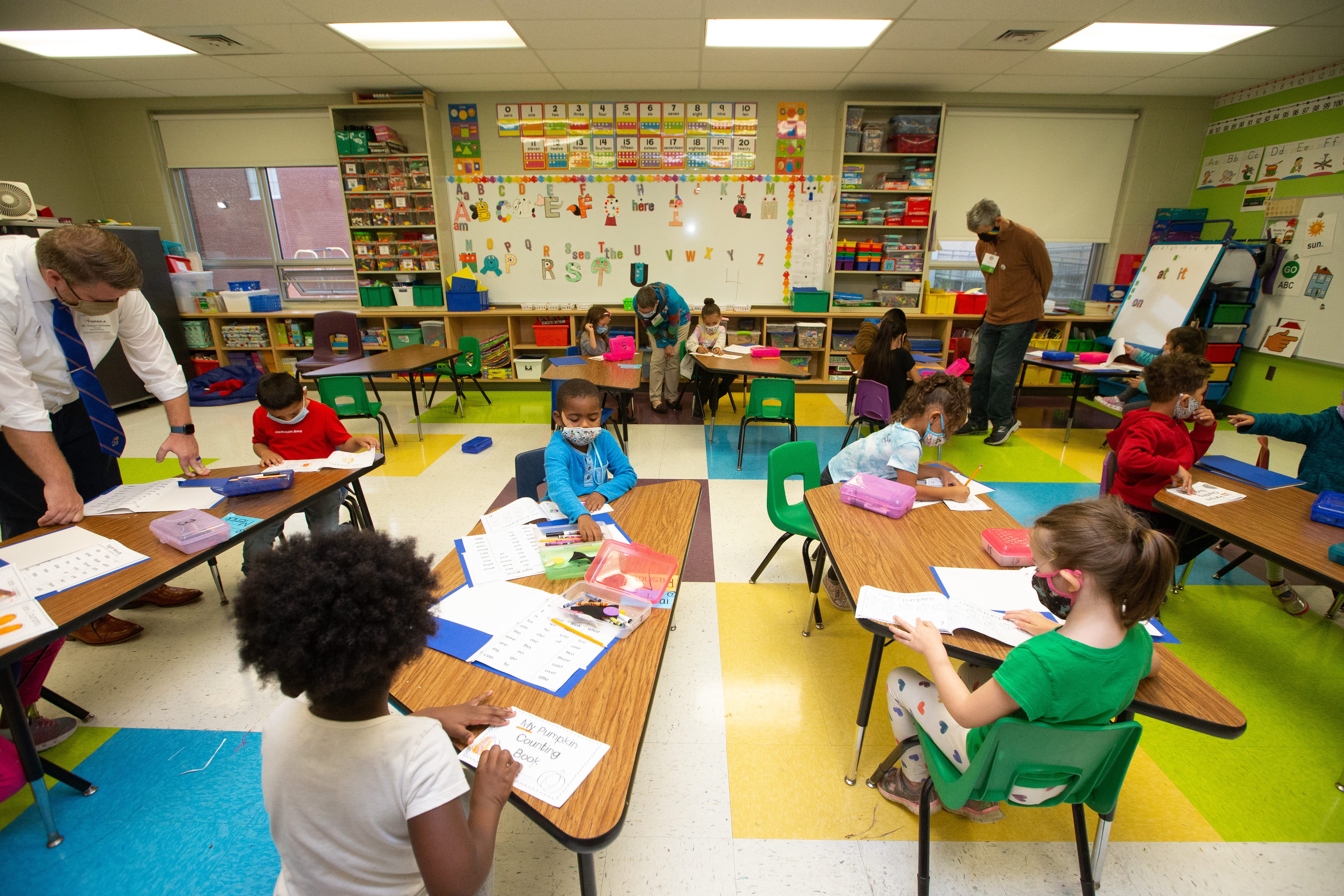Accelerate Learning with Primary Science Tuition Singapore for Young Minds
Accelerate Learning with Primary Science Tuition Singapore for Young Minds
Blog Article
A Comprehensive Overview to the Numerous Understanding Techniques in Primary Science Instruction
The expedition of diverse knowing methods in primary science guideline provides an opportunity for educators to enhance pupil engagement and comprehension substantially. By checking out hands-on understanding techniques, inquiry-based approaches, and joint methods, we can recognize efficient practices that provide to numerous learning designs. In addition, the assimilation of innovation and distinguished direction plays a crucial function in promoting a comprehensive atmosphere. Nevertheless, the question stays: just how can these methods be effectively implemented in the class to optimize their effect? The response lies in a more detailed examination of each technique and its effects for teaching science.

Hands-On Knowing Methods
Hands-on learning techniques play an essential function in primary scientific research guideline, involving trainees in active expedition and trial and error. These approaches permit students to interact directly with sensations and products, fostering a deeper understanding of scientific concepts. By utilizing manipulatives, versions, and real-life experiments, instructors produce an environment where trainees can observe, hypothesize, and evaluate their ideas.
Such methods not just enhance understanding however also grow important reasoning and analytical skills. When trainees take part in tasks like constructing straightforward devices, planting seeds, or carrying out chemical reactions, they are encouraged to ask concerns and look for answers via their own monitorings. This experiential technique aids to demystify complicated clinical principles, making them much more relatable and available.
Furthermore, hands-on knowing promotes cooperation amongst peers, as pupils often function in groups to carry out experiments or share searchings for. This synergy not just enriches their knowing experience but likewise develops necessary social skills. Eventually, integrating hands-on strategies in key scientific research direction fosters a long-lasting love of learning and inquisitiveness concerning the environment, laying a solid structure for future academic pursuits in science and beyond.
Inquiry-Based Discovering
Inquiry-based knowing is an instructional method that encourages students to ask concerns, check out phenomena, and create their own understanding of clinical principles. This method changes the emphasis from standard teacher-led guideline to a more student-centered experience, where students take the campaign in their instructional journey. By promoting curiosity, inquiry-based understanding advertises deeper interaction with the material, permitting pupils to check out subjects in a significant context.
In method, this strategy typically involves hands-on experiments, monitorings, and crucial thinking activities that line up carefully with the clinical approach. Pupils are urged to create hypotheses, layout investigations, and examine information, which grows vital abilities such as problem-solving and analytical thinking. The role of the teacher in this structure is to promote exploration, assisting students via the inquiry procedure while motivating independent thought and cooperation.
In addition, inquiry-based discovering nurtures a feeling of possession over the discovering procedure, inspiring trainees to seek expertise proactively. This technique not only enhances understanding of clinical ideas yet additionally fosters a long-lasting love for knowing, equipping students with the abilities needed to navigate a progressively intricate world.
Collaborative Learning Approaches
Collaborative discovering strategies encourage trainees to take part in significant interactions with peers, cultivating a common duty for their educational outcomes. In primary science instruction, these methods urge students to work with each other to explore clinical concepts, fix issues, and perform experiments (primary science tuition Singapore). By taking this contact form part in group tasks, pupils can take advantage of diverse viewpoints, enabling richer understanding and retention of clinical knowledge
One key facet of joint discovering is the focus on communication skills. Students should verbalize their ideas, pay attention actively to others, and negotiate concepts, all of which are important competencies in both real-world and academic contexts. This social interaction not only improves their understanding of clinical principles however additionally promotes teamwork and dispute resolution abilities.
Furthermore, joint learning typically leads to raised inspiration and involvement. When pupils see the value of their payments within a team, they are more probable to take ownership of their learning trip. Educators can promote this procedure by designing organized team jobs that line up with educational program objectives while providing guidance on efficient collaboration methods. On the whole, integrating collaborative discovering methods in primary scientific research guideline cultivates a vibrant learning environment that prepares pupils for future academic and social difficulties.
Innovation Combination in Scientific Research
The assimilation of technology in primary science instruction boosts finding out experiences by offering ingenious devices and sources that sustain various mentor approaches, including collaborative learning - primary science tuition Singapore. Making use of digital systems, simulations, and interactive applications permits students to involve deeply with scientific principles, assisting in a much more hands-on approach to learning
Virtual labs, for circumstances, enable learners to carry out experiments safely and successfully, advertising inquiry-based understanding. These devices can replicate real-world scientific circumstances, permitting pupils to imagine complicated procedures that would be difficult to duplicate in a standard classroom setting. Modern technology promotes communication and cooperation among trainees, as they can share searchings for and work together on projects through on-line platforms.
Furthermore, multimedia presentations and academic video clips can enrich lessons by catering to varied discovering designs, making abstract concepts a lot more easily accessible. Data evaluation tools additionally equip trainees to accumulate and translate clinical data, reinforcing important believing abilities. In general, the tactical unification of modern technology in primary scientific research guideline not only improves engagement but also prepares pupils for a highly sophisticated society, outfitting them YOURURL.com with vital abilities for future clinical undertakings.
Set Apart Guideline Approaches
Separated guideline strategies are vital for dealing with the varied needs of students in primary science education. These strategies allow teachers to tailor their mentor approaches to fit varying capabilities, passions, and discovering designs within the class. By using set apart guideline, educators can develop an inclusive setting that fosters interaction and boosts understanding of scientific principles.
One effective strategy is to utilize adaptable grouping, which permits students to work together with peers at comparable ability levels or with click over here now differing perspectives. This approach encourages peer discovering and advertises important thinking. Additionally, supplying options in jobs can equip trainees, enabling them to choose tasks that resonate with their passions while still fulfilling curricular purposes.
In addition, incorporating tiered projects is an additional useful method. Deliberately tasks with differing degrees of complexity, teachers can guarantee that all students are appropriately tested, regardless of their effectiveness. Utilizing formative analyses to assess understanding additional makes it possible for instructors to adjust their educational methods dynamically, making certain that each learner obtains the support they need.
Ultimately, executing separated direction methods in main science education not only boosts pupil understanding end results however likewise cultivates an enthusiasm for science, preparing trainees for future scholastic quests.

Verdict
In recap, reliable primary science guideline requires a multifaceted technique that encompasses hands-on discovering, inquiry-based techniques, and joint strategies. The integration of technology and separated guideline even more caters to diverse learning styles, promoting an environment helpful to expedition and critical reasoning.
The exploration of diverse discovering methods in primary scientific research direction offers a chance for instructors to enhance pupil interaction and understanding substantially.Hands-on knowing strategies play an essential duty in key science direction, engaging trainees in active expedition and trial and error.Inquiry-based learning is an instructional strategy that encourages pupils to ask concerns, investigate phenomena, and create their very own understanding of clinical ideas.Joint knowing strategies equip students to engage in purposeful communications with peers, promoting a shared obligation for their instructional end results. Generally, integrating collaborative knowing methods in primary scientific research guideline cultivates a dynamic learning setting that prepares trainees for future academic and social difficulties.
Report this page